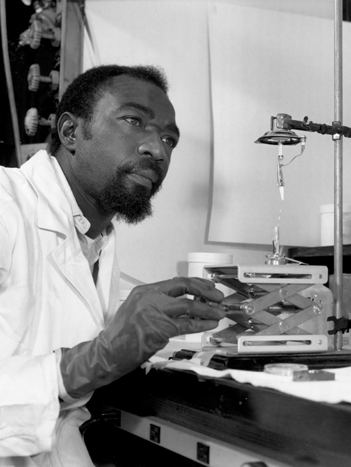Nationality African American Died 12 December 2000 | ||
 | ||
Notable work Co-discovery of rutherfordium and dubnium | ||
Depression james andrew harris performance and events production 2015 final submisson
James Andrew Harris (March 26, 1932 – December 12, 2000) was a nuclear chemist who was involved in the discovery of elements 104 and 105 (rutherfordium and dubnium, respectively). Harris is known for being the first African American to contribute to the discovery of new elements.
Contents
- Depression james andrew harris performance and events production 2015 final submisson
- Personal life
- Education
- Career
- Controversy
- Organizations
- References
Personal life
James A. Harris was born on March 26, 1932 in Waco, Texas. Harris' parents divorced when he was young, after which he moved to Oakland,California with his mother and attended high school. Harris met his wife Helen at Houston-Tillosten College, where they were both completing their undergraduate studies; they were married in 1957 and had five children, Cedric, Keith, Hilda, Kimberly, and James II. Between the time of his graduation from college and his marriage, Harris served in the Army. His hobbies included golf, traveling, and community activities. James A. Harris died of a sudden illness on December 12, 2000.
Education
James A. Harris attended McClymond High School in Oakland, California. After high school, Harris returned to Texas where he attended Houston-Tillosten College in Austin. He studied chemistry and received a bachelor of science degree in 1953. In 1975, Harris received a master's degree in Public Administration at California State University, Hayward. Harris was awarded an honorary doctorate from Houston-Tillosten College in 1973 for his co-discovery of rutherfordium and dubnium.
Career
Harris' first job in chemical research was at Tracerlab Inc. as a radiochemist; he worked there for five years. After that time, Harris left Tracerlab Inc. to work on the Nuclear Chemistry department of the Lawrence Radiation Laboratory at University of California-Berkeley working on isotope division. In 1977, Harris was promoted to head of the Head of Engineering and Technical Services Division at Lawrence. Harris retired from his work in the lab in 1988.
Harris worked in the Heavy Isotopes Production Group. His job was to design and purify targets that would be used to discover elements 104 and 105. These targets needed minimal impurities of elements such as lead to work. Harris' colleagues praised his work, saying that it was high quality and good for elemental research.
Controversy
Two research teams were simultaneously working to discover elements 104 and 105. One was Harris’s team at the University of California-Berkeley and the other was a team of Russian scientists. Both teams successfully isolated the two elements around the same time, so there is dispute over which team was actually the first to isolate the elements. To ease the dispute, element 104 was given the name suggested by the American research team, rutherfordium, after the influential British physicist. Element 105 was subsequently given the name dubnium, representing the city where the Russian team worked.
Organizations
Harris worked on the following organizations:
